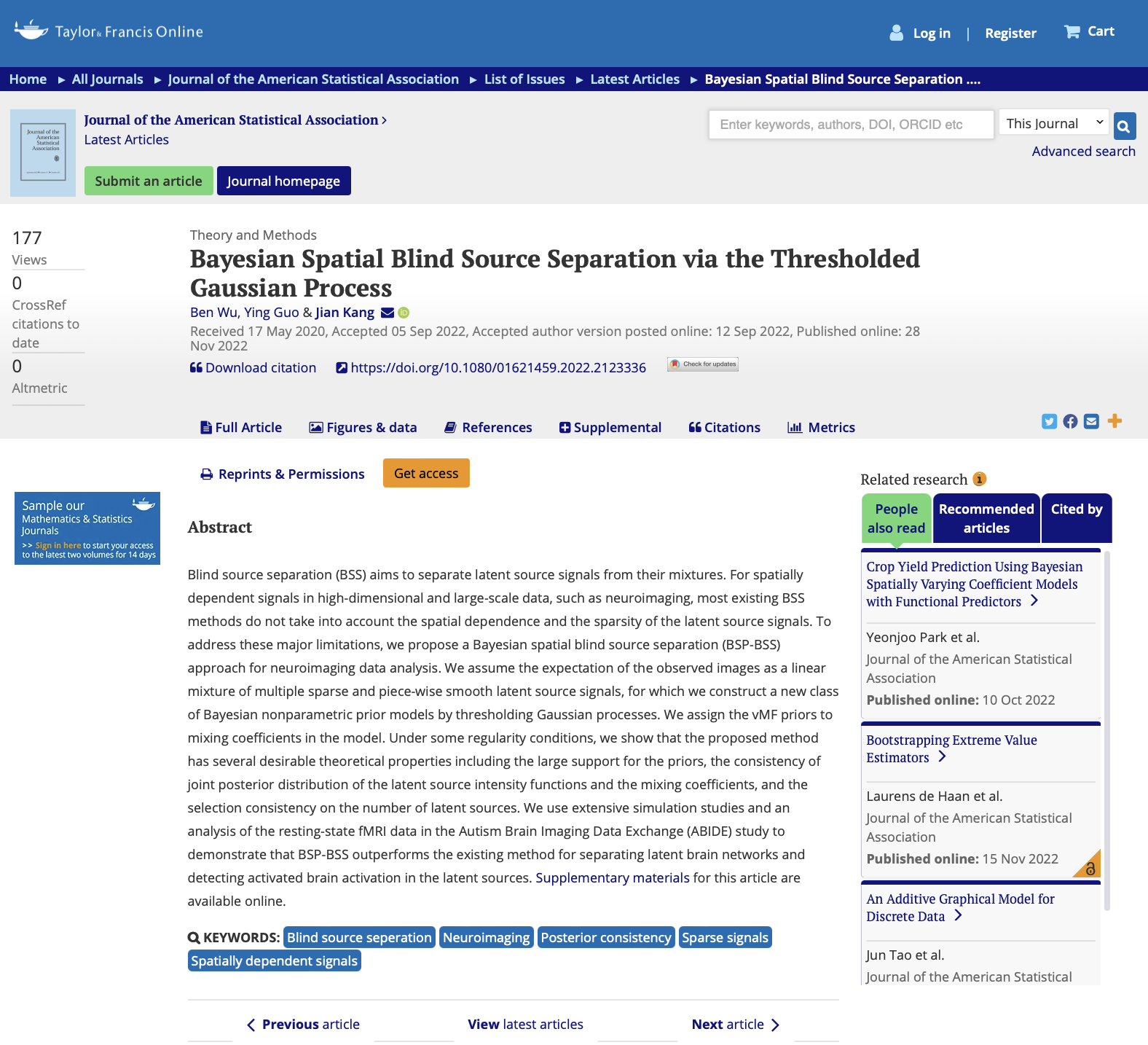
我院讲师吴奔与埃默里大学郭颖教授、密歇根大学康健教授在《Journal of the American Statistical Association》发表合作论文。该研究提出了一种针对具有空间相依性的高维数据(如神经影像数据)的贝叶斯盲源分离模型。该模型利用阈值高斯过程构造了一种新的贝叶斯非参数先验,能很好地刻画信号源在空间上的光滑性与稀疏性,并实现信号源数量的自动选择。文章讨论了新模型的理论性质。相关R软件包BSPBSS已上传至CRAN。
论文题目
Bayesian Spatial Blind Source Separation via the Thresholded Gaussian Process
论文摘要
Blind source separation (BSS) aims to separate latent source signals from their mixtures. For spatially dependent signals in high dimensional and large-scale data, such as neuroimaging, most existing BSS methods do not take into account the spatial dependence and the sparsity of the latent source signals. To address these major limitations, we propose a Bayesian spatial blind source separation (BSP-BSS) approach for neuroimaging data analysis. We assume the expectation of the observed images as a linear mixture of multiple sparse and piece-wise smooth latent source signals, for which we construct a new class of Bayesian nonparametric prior models by thresholding Gaussian processes. We assign the vMF priors to mixing coefficients in the model. Under some regularity conditions, we show that the proposed method has several desirable theoretical properties including the large support for the priors, the consistency of joint posterior distribution of the latent source intensity functions and the mixing coefficients, and the selection consistency on the number of latent sources. We use extensive simulation studies and an analysis of the resting-state fMRI data in the Autism Brain Imaging Data Exchange (ABIDE) study to demonstrate that BSP-BSS outperforms the existing method for separating latent brain networks and detecting activated brain activation in the latent sources.
作者介绍
吴奔,中国人民大学统计学院讲师,应用统计科学研究中心研究员,主要从事贝叶斯统计、独立成分分析、神经影像数据分析等领域研究。

论文发表截图
